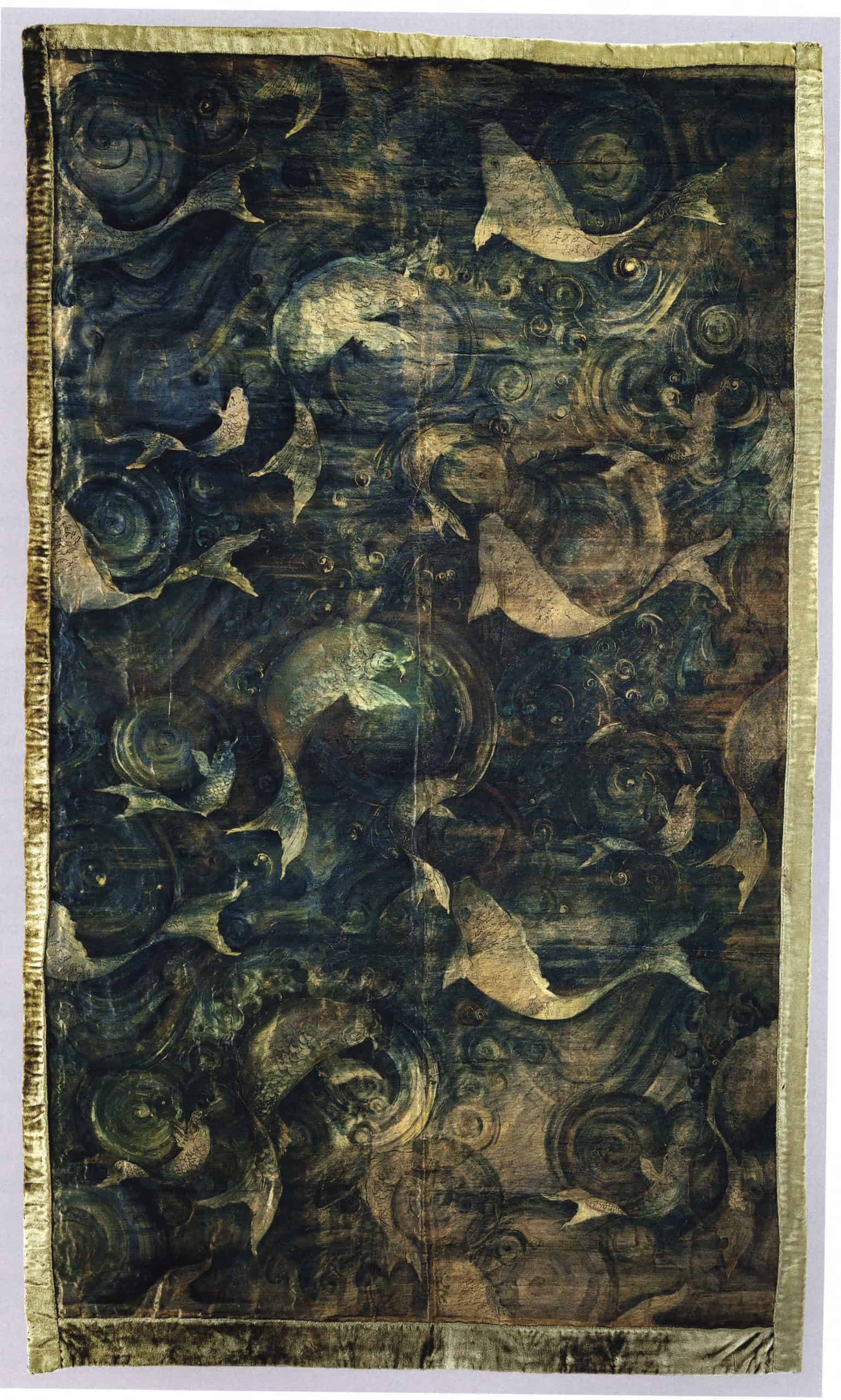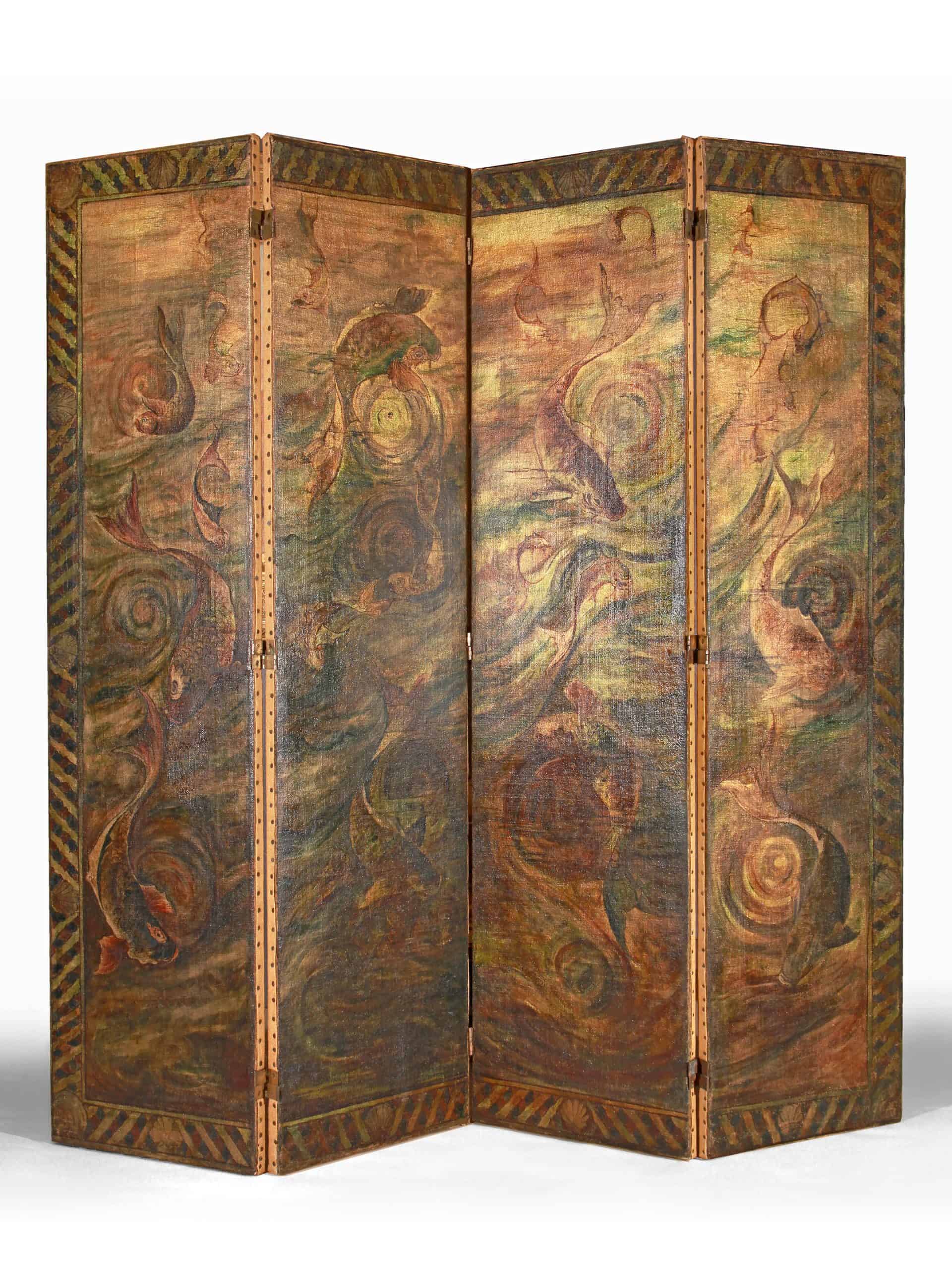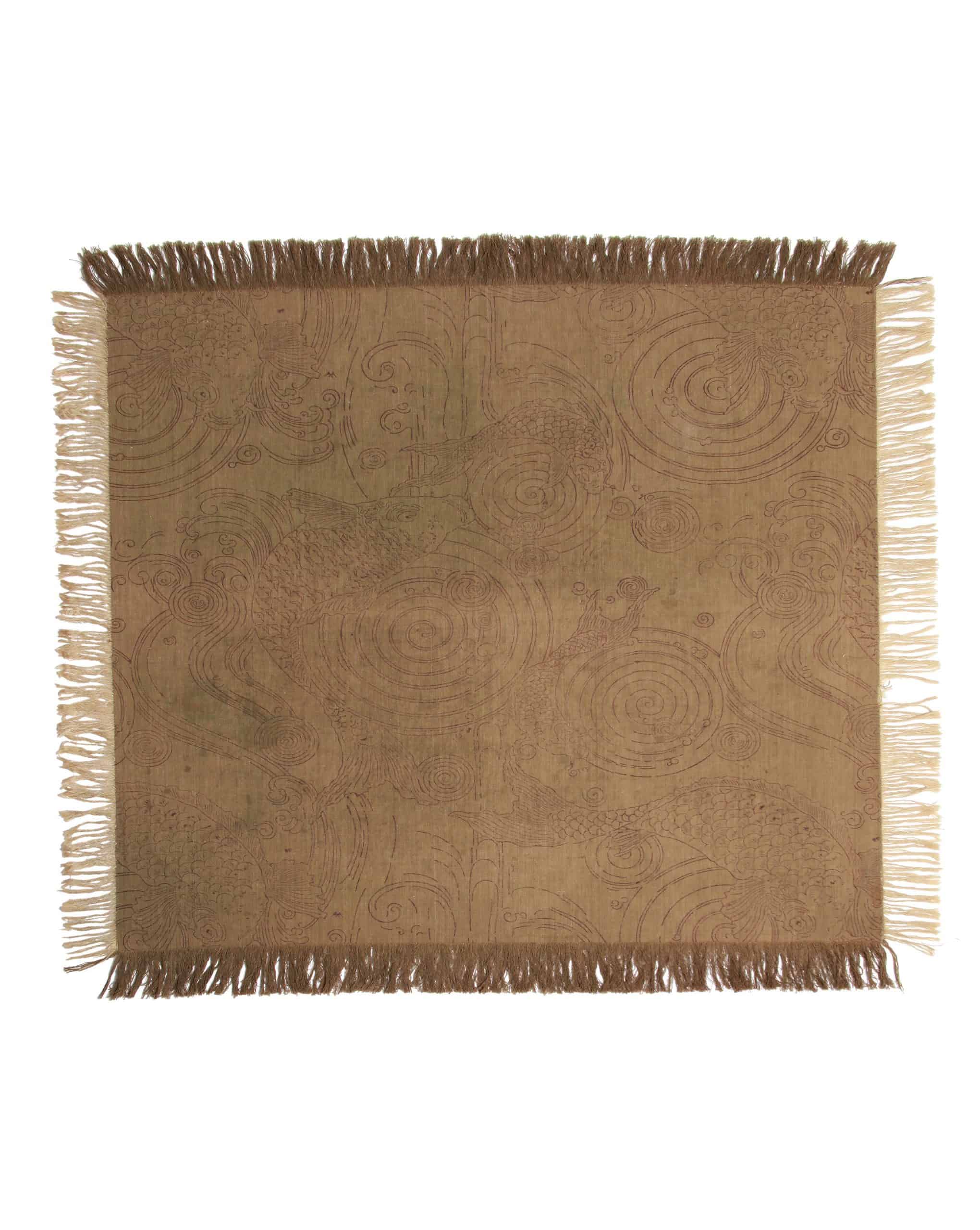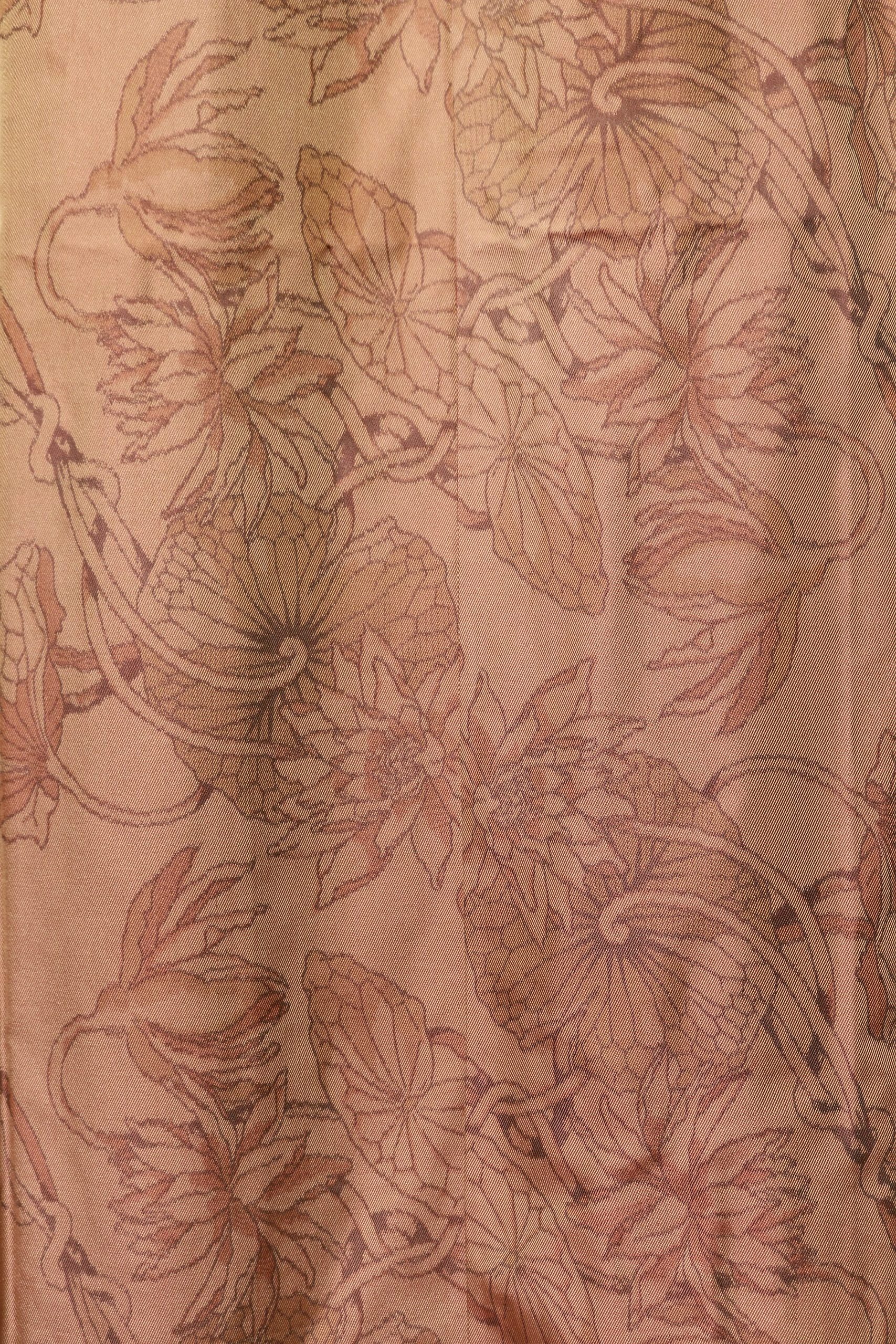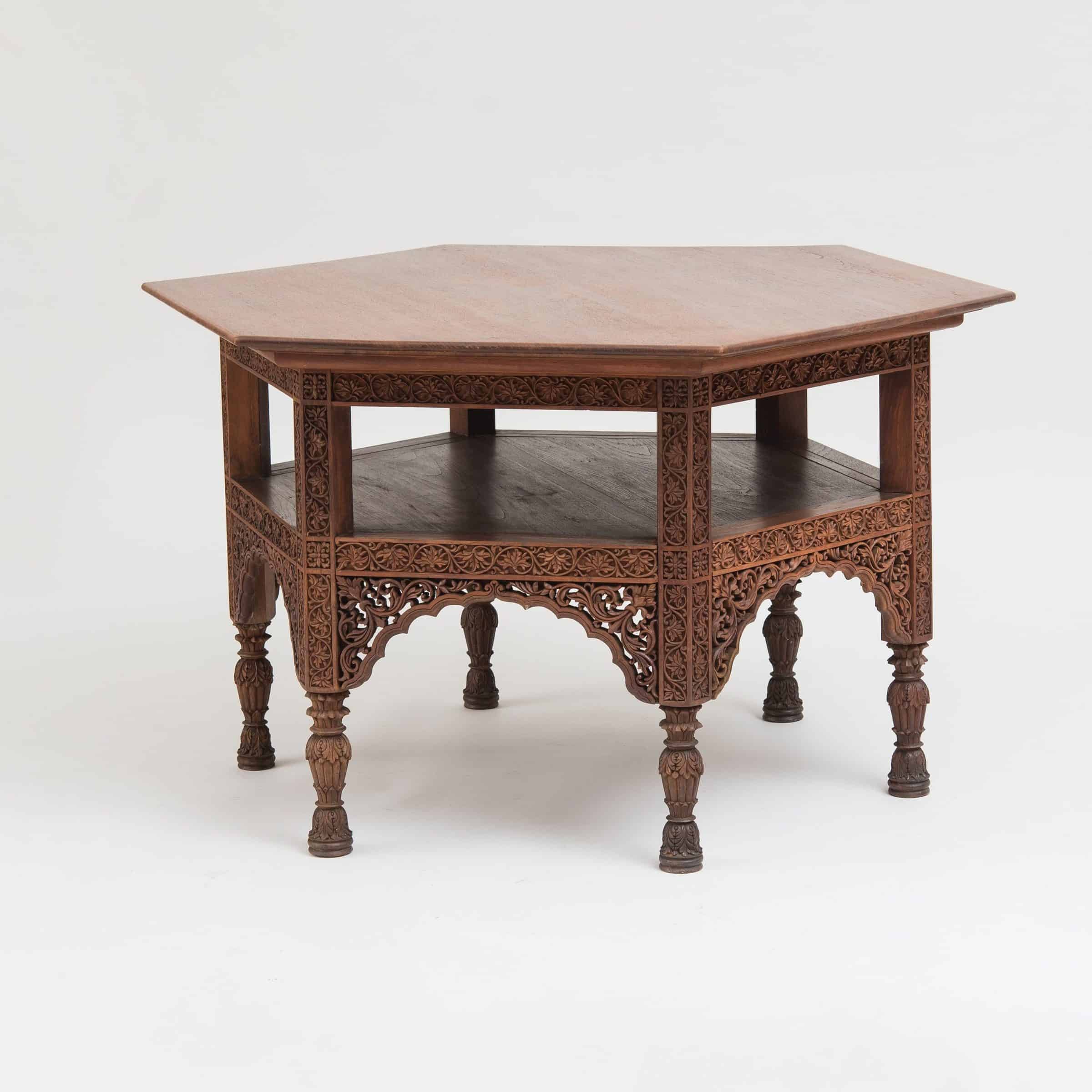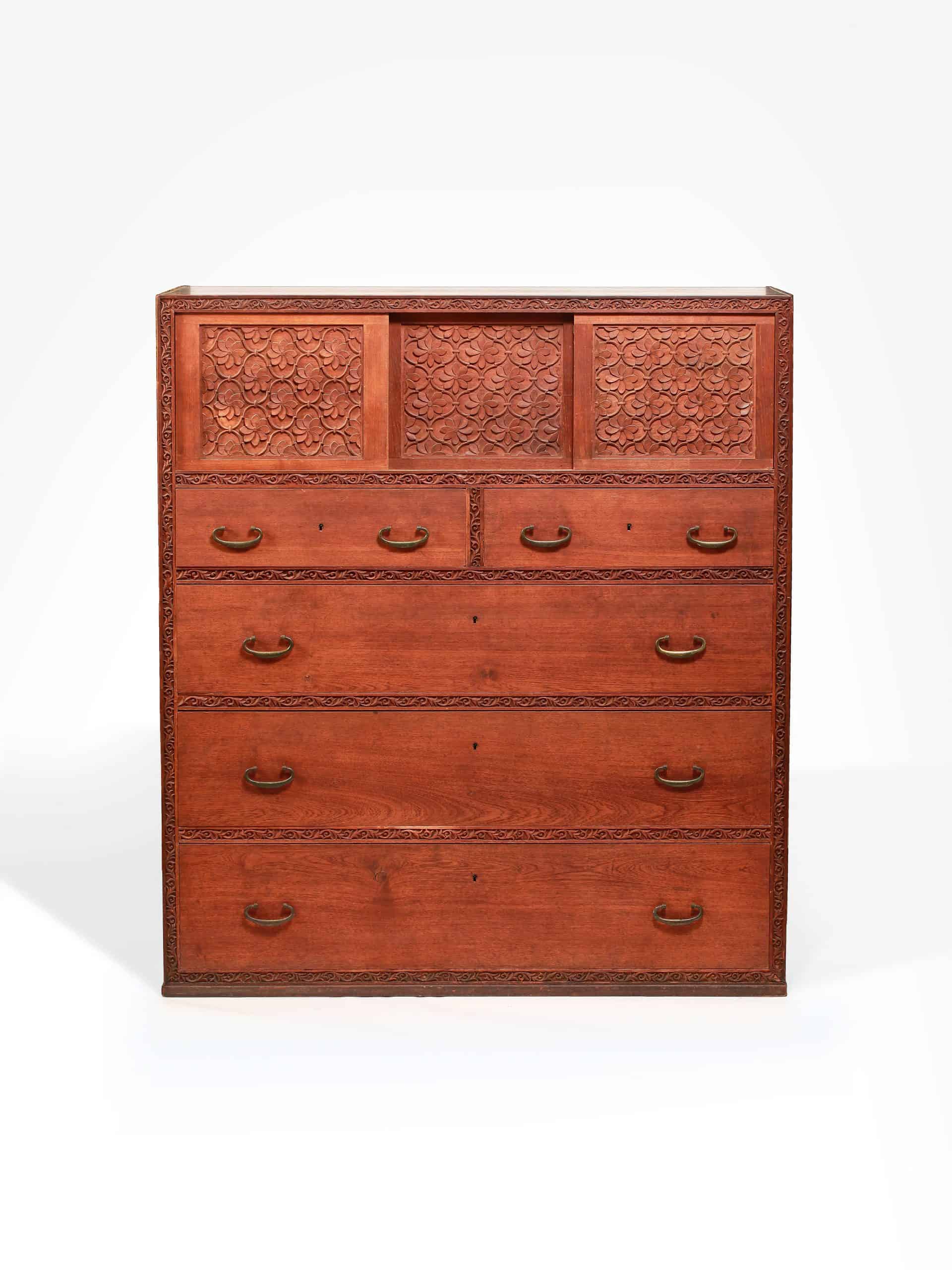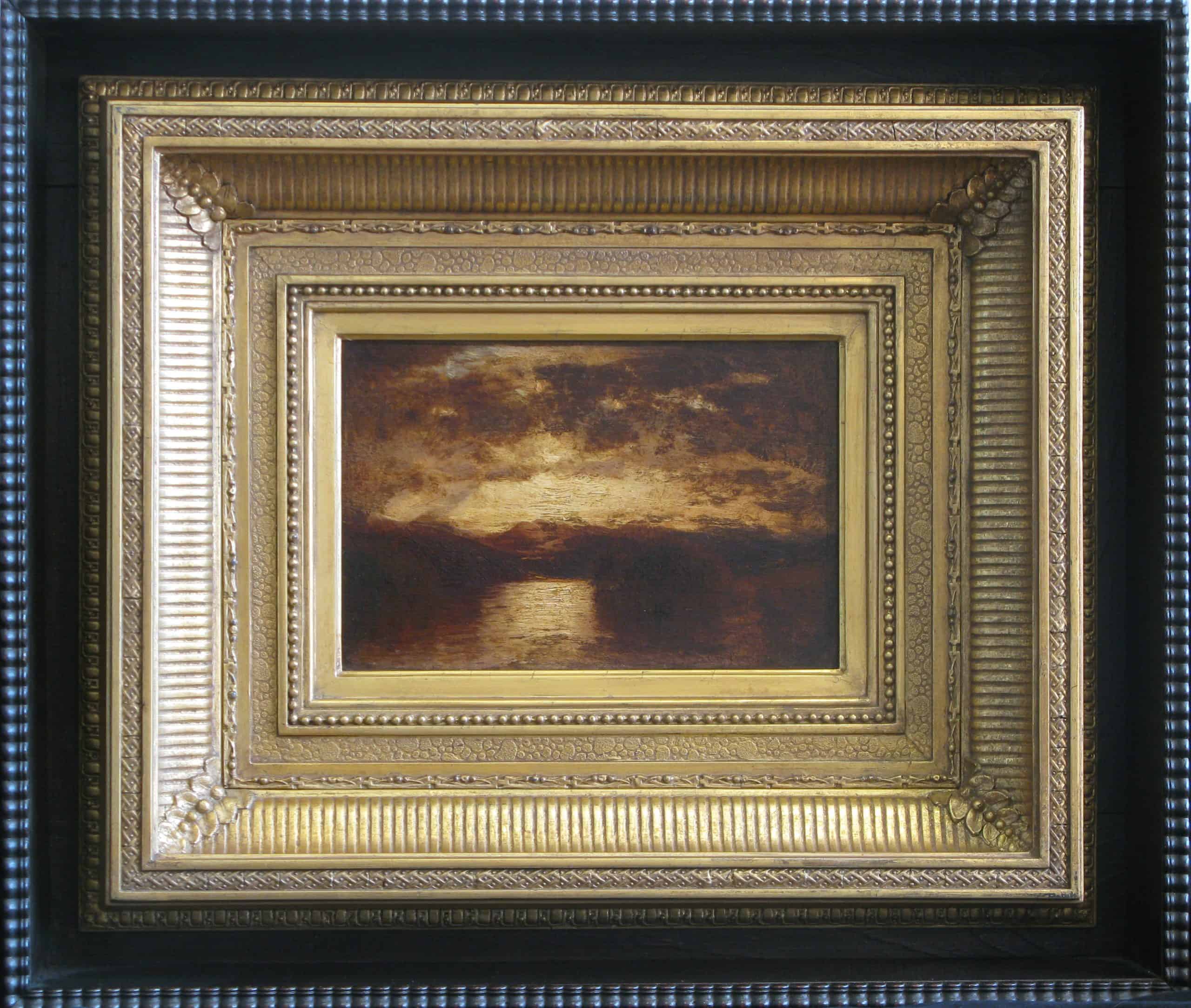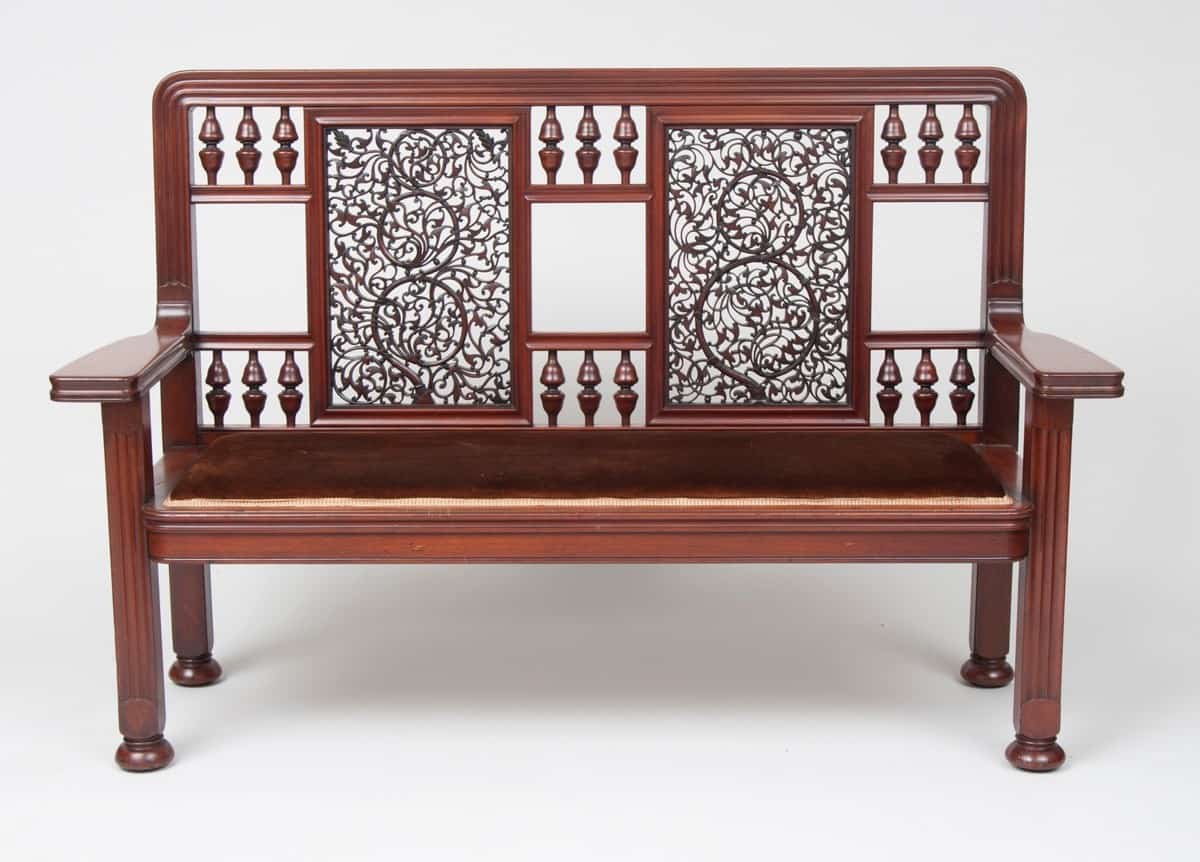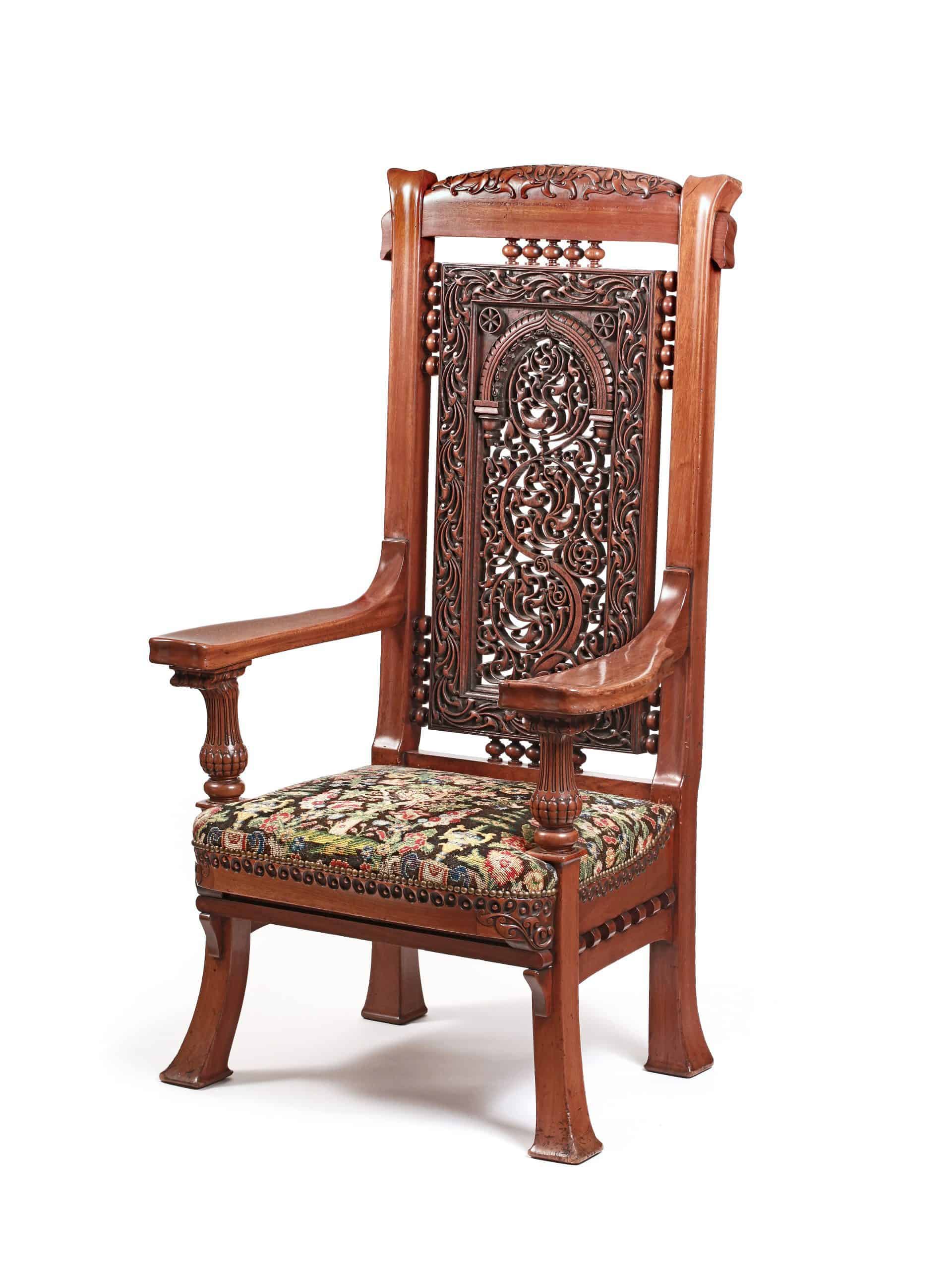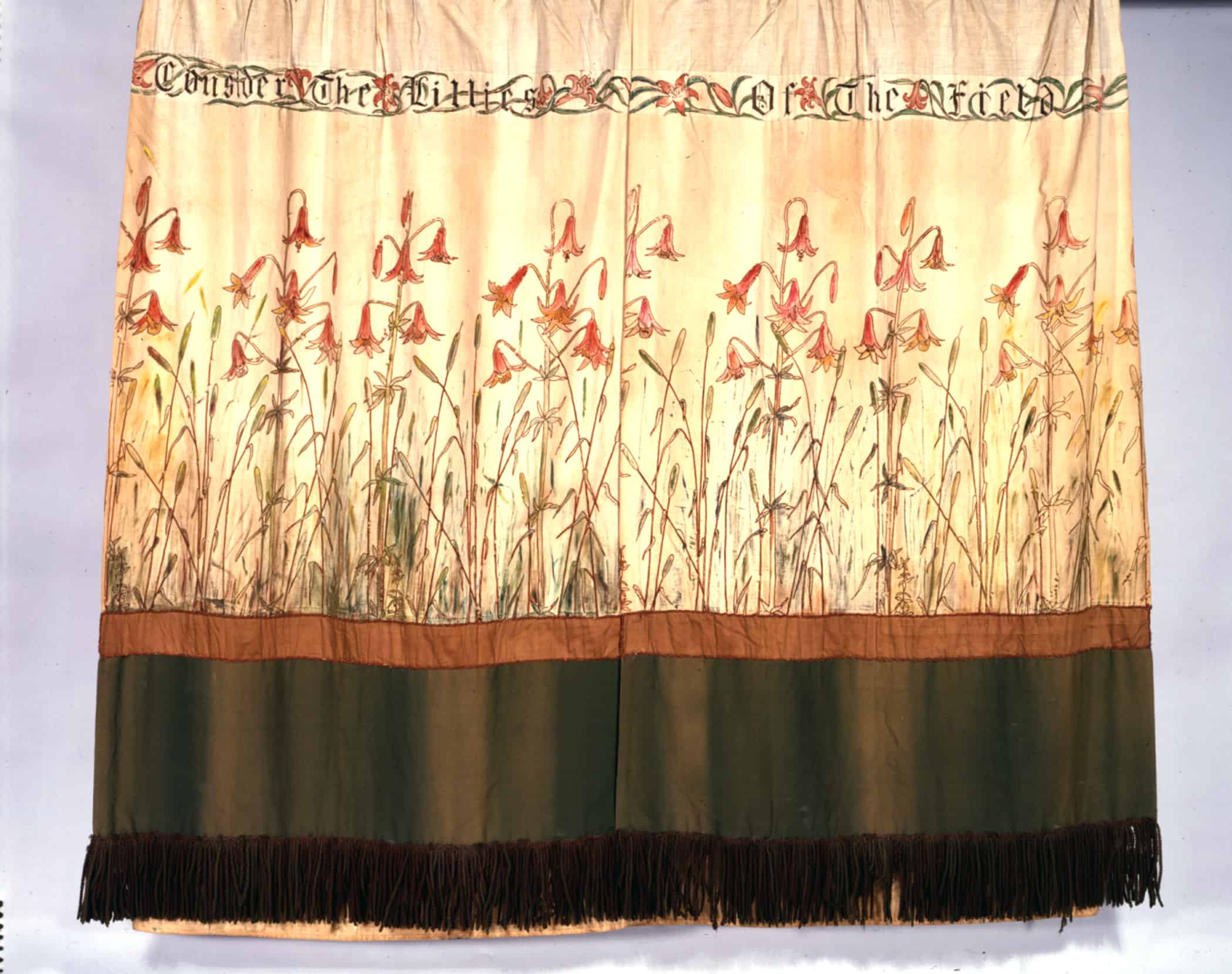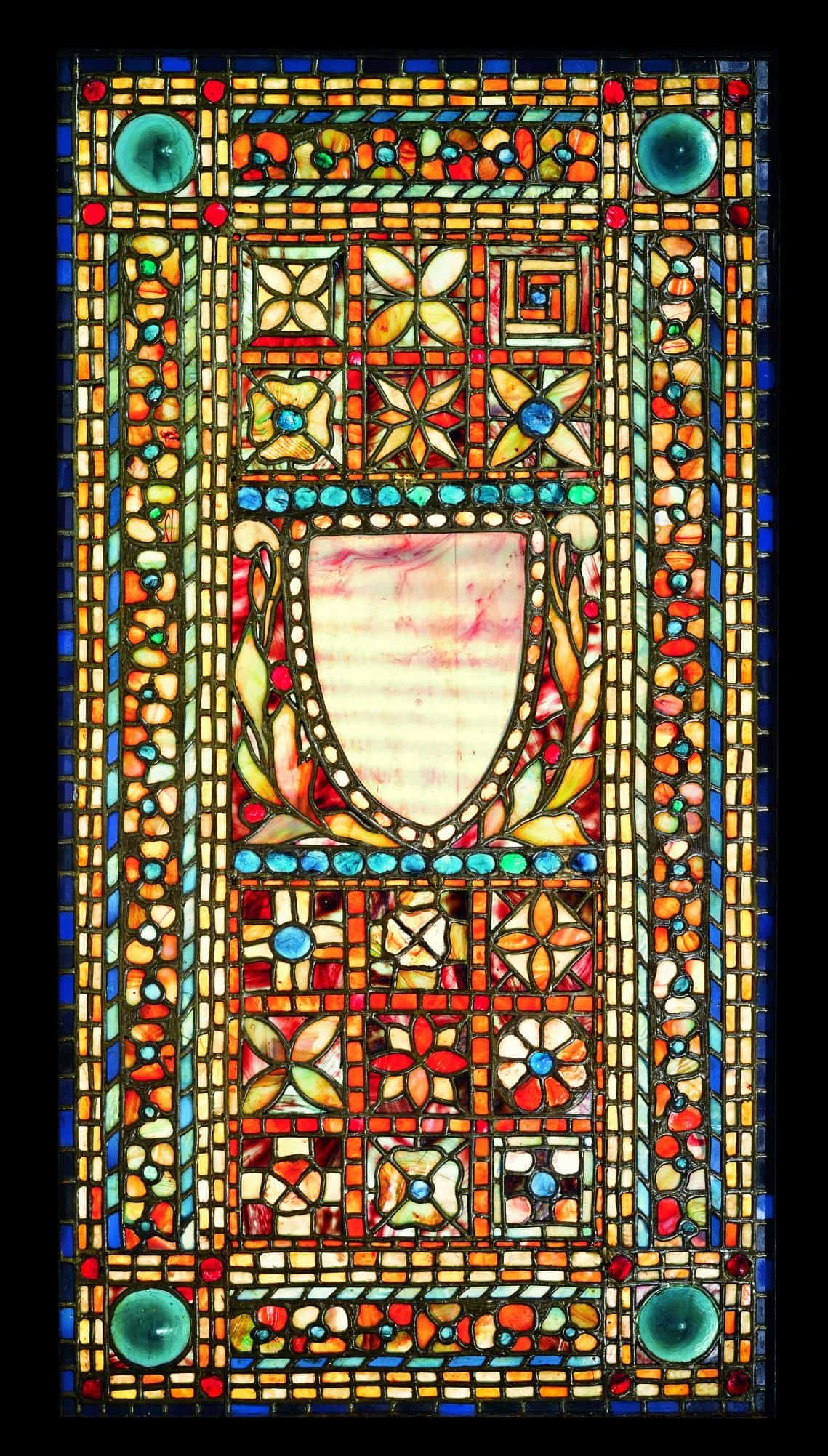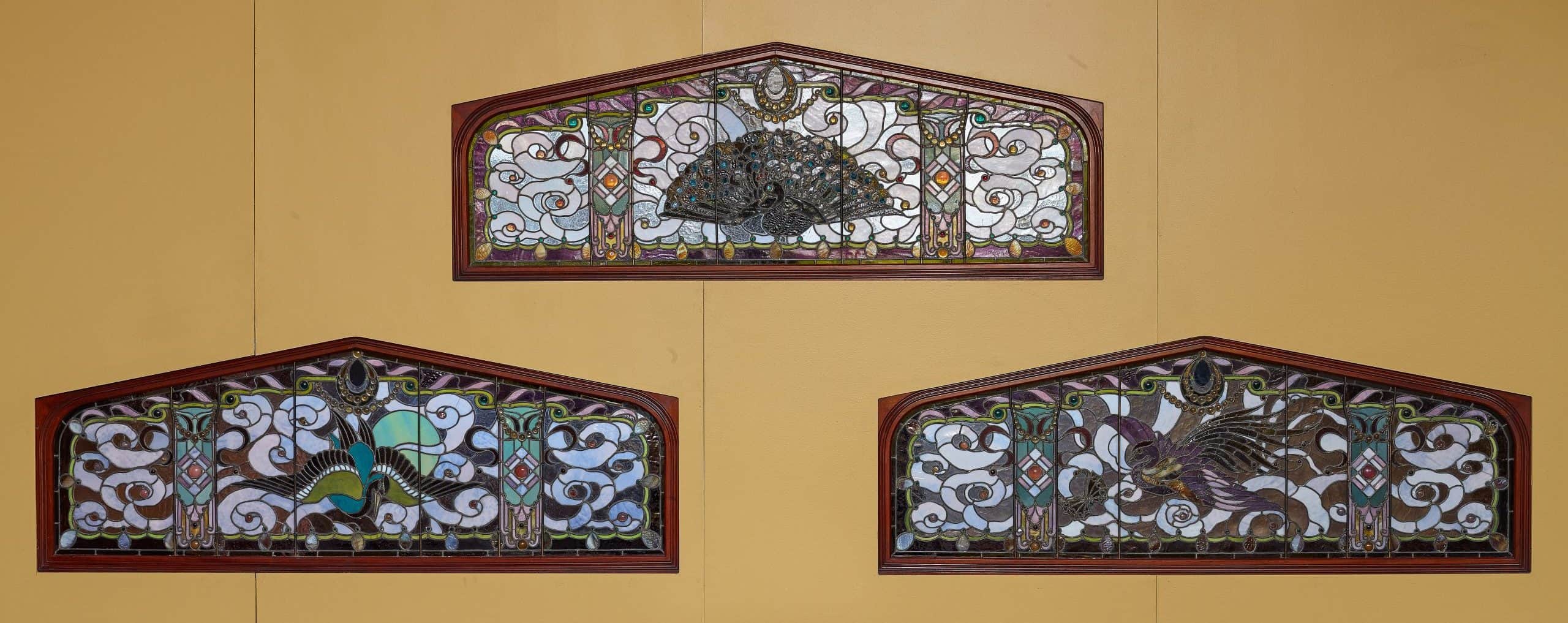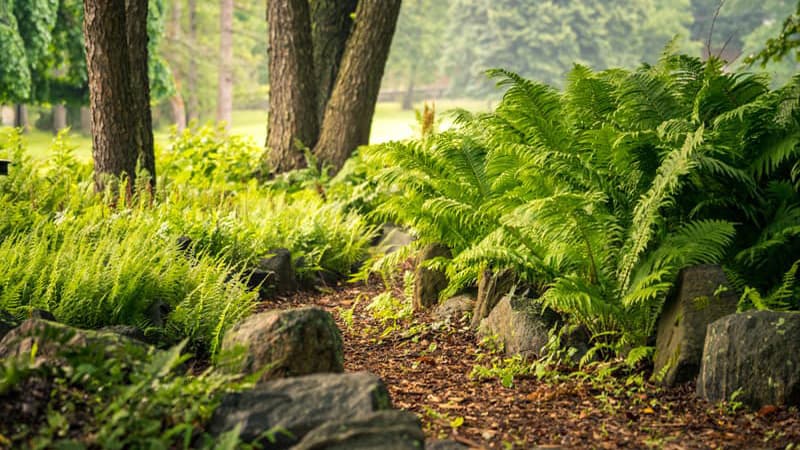by Roberta A. Mayer
The young Louis Comfort Tiffany was familiar with the refined collection of rare and exotic objects assembled by Tiffany & Company silversmith Edward C. Moore. His later interest in the decorative arts paralleled his professional development and self-presentation as a painter. Tiffany took his first residence and studio at the YMCA at East Twenty-Third Street and Fourth Avenue in December 1869. The decor evolved with his travels through Europe and North Africa. Tiffany was deeply influenced by the richly appointed artistic studios he had seen in Paris; as a student, he recalled visiting the studio of Leon Auguste Adolphe Belly. During another trip to Paris in 1874, he saw the stunning and exotic Salon of Oriental Art created by Albert Groupil (brother in law of Jean-Leon Gerome) at 9 Rue Chaptal at the Hotel Groupil.
As he was fashioning his studio, Tiffany also became fascinated with contemporary hand-embroidered textiles through Candace Wheeler. At the Centennial Exhibition, Wheeler saw the booth hosted by the Royal Society of Art Needlework, an organization based in London at the South Kensington School, and she became interested in their work. In 1877, she established the Society of Decorative Art in New York, and Samuel Colman, Lockwood de Forest, and Tiffany briefly participated in support of the effort. Soon, Tiffany began to realize that there was a potential market for artistic decorating, especially with the growing wealth that heralded the Gilded Age, and with the cachet of the Tiffany name, family support, and social connections, he was poised for instant success.
Over the next two years, he created formal business partnerships with Wheeler for textiles and with de Forest for the importation of carpets, decorative objects, and woodwork from Egypt and India. Tiffany also subcontracted with many other artists as he began to offer custom interior designs that were like nothing else in New York. This highly creative phase of Tiffany’s career leads to the founding of Louis C. Tiffany & Company, Associated Artists.
At the outset of his decorating career, Tiffany rejected historicism as a guiding principle and instead embraced eclecticism and exoticism. He turned discarded wallpaper printing rollers and blocks into interior architecture and furniture – a remarkable novelty that foreshadowed the upcycling that is now common in the early decades of the 21st century. Taking inspiration from Moorish Spain, he used cast plaster as an architectural ornament; it was enlivened with reflective paint and embedded with luminous glass. He found many uses for architectural salvage and beautifully carved teakwood that de Forest had imported from India. Tiffany’s chimneypieces featured hand-painted tiles, opalescent pressed glass, or translucent mica screens. His decorative paintings of turkeys, pumpkins, and gourds were also part of the mix. Likewise, Tiffany’s most obvious transition from oil painting to “painting with glass” occurred in these years.
Many of Tiffany’s earliest clients for interiors were friends and family, but his sphere of influence spread rapidly with the connections facilitated by his father and by the publicity generated by the press. He was the color consultant for James Steele MacKaye’s Madison Square Theatre, as well as the designer of two embroidered drop curtains (after the first one was destroyed in a fire after only two weeks). By 1882, Louis C. Tiffany & Company, Associated Artists, was hired to decorate the White House for President Chester A. Arthur, and the demand for his artistic design skyrocketed after that.
The firm of Louis C. Tiffany & Company, Associated Artists was dissolved in 1883. Wheeler then started her own textile business using the name “Associated Artists.” Tiffany continued to recognize and develop his later businesses, including Tiffany Glass & Decorating Company (1892-1900) and culminating with Tiffany Studios (1902-32), which offered a wide variety of luxurious decorative objects, trademarked favrile glass, textiles and furnishings, as well as design services. Tiffany’s international reputation as an artist-entrepreneur was well established by the time that Jay Gould, and, later his daughter Helen Gould, commissioned exceptional work that would privately and publicly memorialize the Gould Family.
